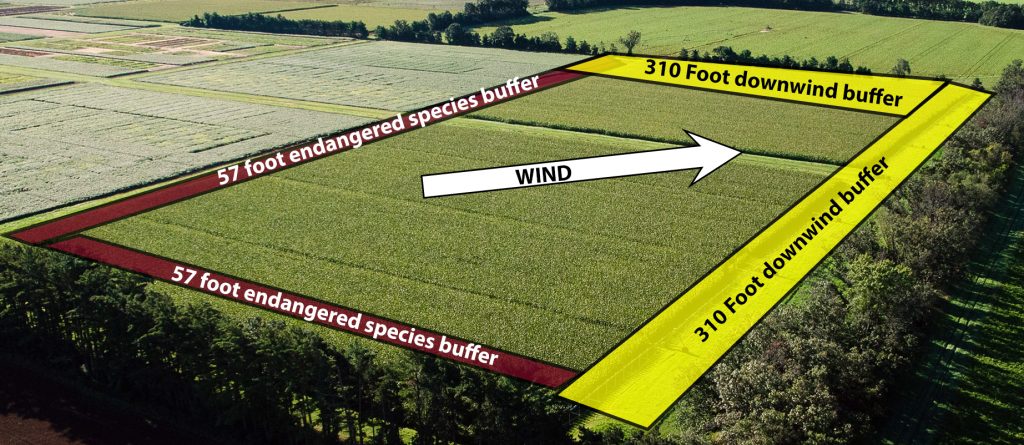The good news is that there are no (foreseen) rule changes coming next year for dicamba products meant to be used over the top of dicamba-tolerant soybeans. The bad news is there are still many regulations applicators must know about—and use—if they want to apply these herbicides. So, this article will be a brief refresher and point you to more in-depth sources of information.
There are three products currently registered for this use:
- Engenia Herbicide®, manufactured by BASF
- Xtendimax® With VaporGrip® Technology, made by Bayer CropScience
- Tavium® Plus VaporGrip® Technology, a Syngenta product
These herbicides are intended for post-emergent use on soybeans that have been genetically modified to resist damage from the chemical. The registration for these products is set to expire in 2025, barring changes from the EPA.
Because of numerous drift problems, crop damage and complaints, the EPA has implemented extensive requirements to try and lessen the problems, while still allowing their use.
Training
To use the three dicamba products listed above an applicator must be certified and go through an additional product training. This additional training is dictated by the pesticide labels. And we all know from our training that “the label is the law.” Wisconsin will accept training provided by the three companies that make the products, or approved training provided by other states. You need to have a proof that you got training to apply these products. A list with links to training will be at the end of this article.
Bulletins Live and Buffer Zones
The EPA has a bulletin system to help protect endangered species from exposure to certain pesticides. Some pesticide labels will direct you to the EPA’s Bulletins Live Two (BLT) website to find specific use restrictions (based on county) for the product to protect endangered and threatened species. All three of the over-the-top dicamba products will direct you to check the BLT website. In certain counties the bulletin will require you to have both a 310-foot in-field wind-directional spray drift buffer and a 57-foot infield buffer on other field edges (see illustration).

Other Regulations
Recordkeeping requirements are new and different from those for other pesticides.
- You must check with the owner or operator of neighboring fields to find out what is planted or will be planted there.
- Prohibition of over-the-top dicamba spraying on soybeans 45 days after planting.
- Enhanced tank clean out instructions for the entire system.
These are not all the requirements. Please read the label thoroughly. Remember, the label is the law.
Resources
You can find the three manufacturer training at the websites below:
Bayer Training
BASF Training
Syngenta Training
DATCP Resources:
Main DATCP website for over-the-top dicamba regulations.
DATCP dicamba brochure.
EPA Bulletins Live Two website
PAT website page on dicamba




